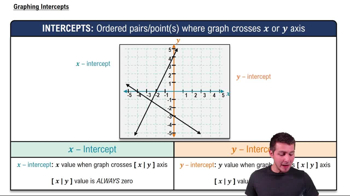Textbook Question
Determine whether each relation defines a function. See Example 1.
{(5, 1), (3, 2), (4, 9), (7, 8)}
52
views
 Verified step by step guidance
Verified step by step guidance Verified video answer for a similar problem:
Verified video answer for a similar problem:



 5:2m
5:2mMaster Introduction to Relations and Functions with a bite sized video explanation from Nick Kaneko
Start learning